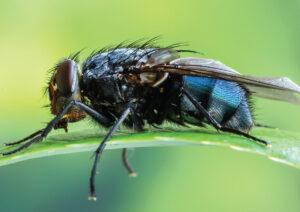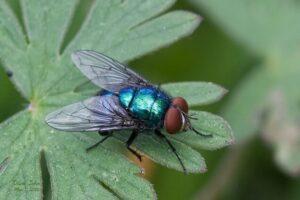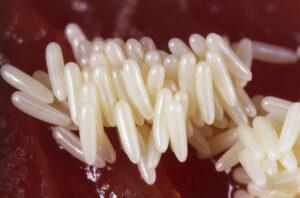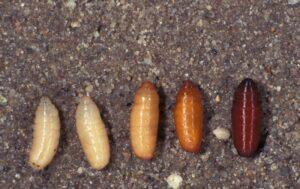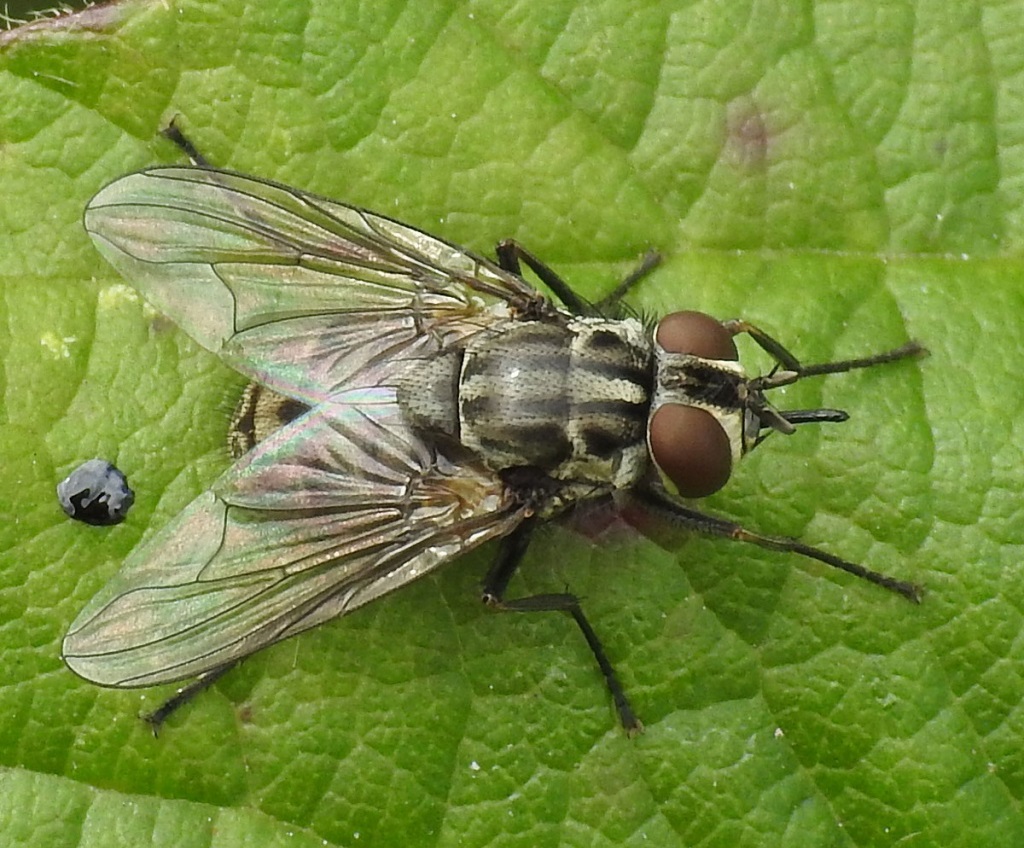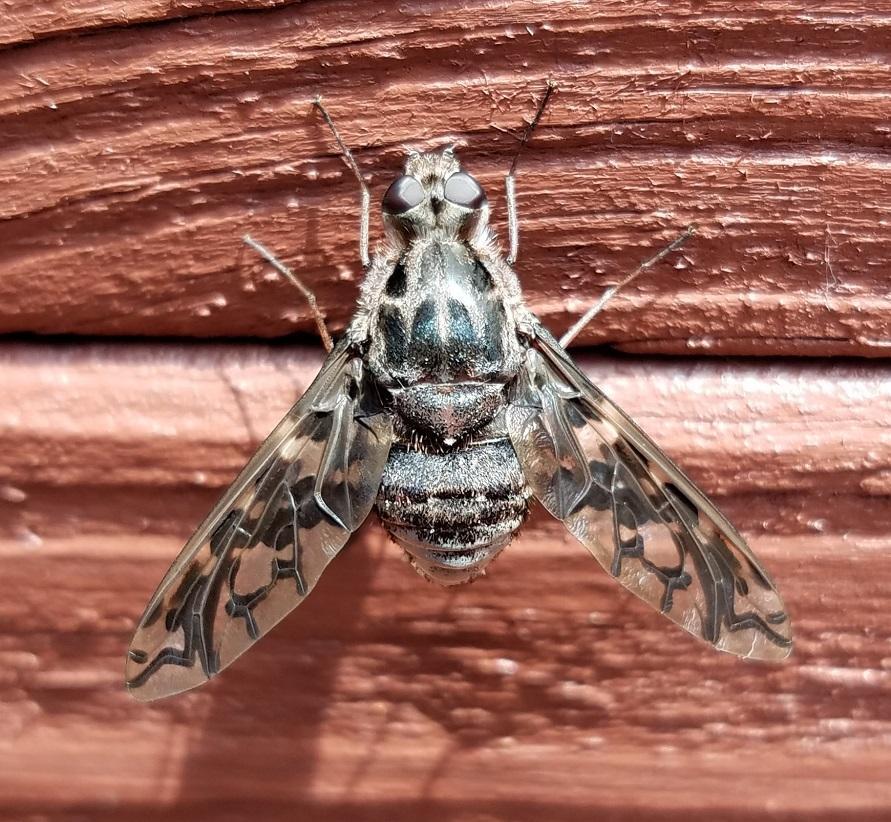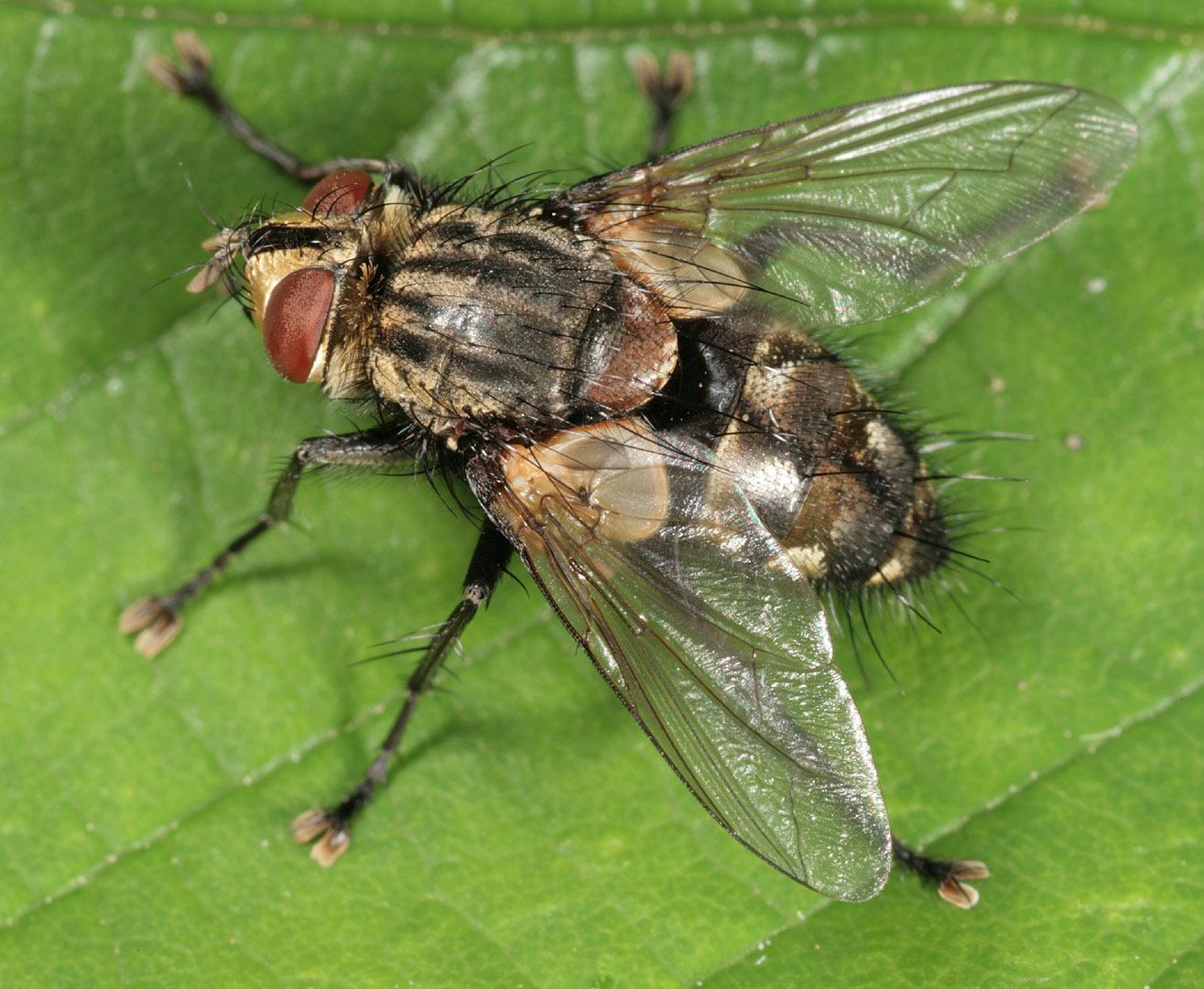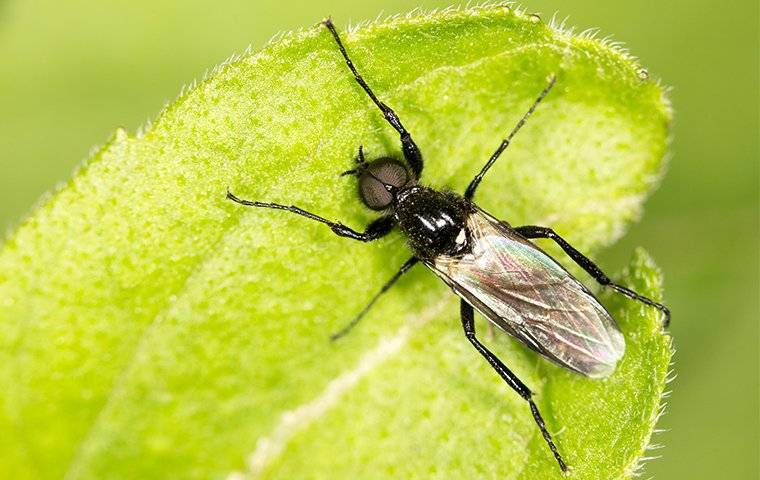Blue Bottle Fly (Calliphora vomitoria)
Updated on
01/11/2022Blue bottle fly is a common pest that is characterized by a blue body endowed with a metallic glaze. It is also known by the names orange-bearded blue bottle and bottlebee. It is important in forensics as it lays eggs on rotting corpses allowing a good estimate of the time a death occurred.
Scientific Classification
- Class:Insecta
- Order:Diptera
- Family:Calliphoridae
- Genus:Calliphora
- Species:C. vomitoria
Conservation Status
Description
The blue bottle fly is pretty large, around 0.38 – 0.56 in (10-14 mm) long, twice the size of a housefly. Its head and thorax are dull gray, with the back of the head having long yellow-orange setae. The bright metallic blue abdomen has black markings. The bright pink chest has spikes to protect the insect from other flies. Its wings are transparent, and its eyes are red. Its entire body, including the legs, is covered with black, bristly hair. It has 4 tarsi on each leg and short, aristate antennae. The antennae and legs are black and pink.
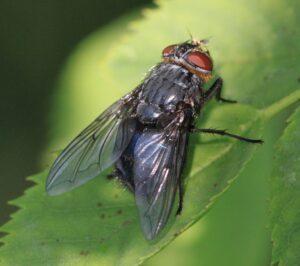
Its legs have cushion-like hairy feet that end in a couple of claws that prevent it from falling by holding on to irregular surfaces. In addition, non-volatile lipids secreted from the foot hairs and the hairs on its ventral side help it adhere easily to smooth surfaces. It has a loud buzzing flight.
Distribution: Throughout the world, including Alaska, southern Mexico, southern Africa, United States, most of Europe, and Greenland.
Habitat: Mostly rural areas in winter and summer and riparian areas in spring and fall. They are more abundant during summer and spring and least in winter and fall.
Do They Bite/Sting: No.
Lifespan: They live for around 6 weeks.
Predators: Glass mantis
Behavior and Characteristics
Diet
Adult blue bottle flies feed on nectar. The larvae derive their nutrition from corpses of animals and humans, the medium in which they grow, by secreting enzymes to break down the dead tissues. The latter can colonize even buried remains. It has been observed that the flies grow better when they consume processed substrates like minced meat than unprocessed substrates like raw liver. They fly in packs for foraging. When one fly in the pack detects food, it releases a pheromone that alerts others.
Blue bottle flies are pollinators of flowers. They are especially attracted to flowers that have a smell similar to decaying meat. Skunk cabbage, dead horse arum, American pawpaw, some species of carrots, and goldenrod are some of the plants pollinated by the fly.
Life Cycle
The insect passes through 4 stages of its life. They are egg, larva (maggot), pupa, and adult.
1. Egg Stage
The eggs are usually laid around wounds on fresh corpses shortly after death. This makes the species an important forensic insect as its eggs and their laying time are used to determine the time of a person’s death. Feces, decaying meat, and garbage are other places for laying eggs. The eggs are usually aggregated in a site so the larvae can keep themselves warm and easily feed in a group.
2. Larva Stage
The larvae or maggots hatch out of the eggs after 2-3 days and begin feeding voraciously, leading to high amounts of protein synthesis.
The larvae fully develop after feeding for just 3 days. Around this time, its salivary glands self-destruct. Before entering the pupal stage, they leave the decaying corpses, and crawl to a drier location where they burrow into soil or similar material to pupate.
3. Pupa Stage
Tough brown cocoons characterize the pupal stage. It is the longest stage of the insect’s life cycle lasting 2-3 weeks.
4. Adult Stage
The adults that emerge from the pupae are ready to mate and begin the life cycle all over again. The adults live for 10-14 days. The pupa and adult stages undergo hibernation in winter. They don’t fly or deposit eggs at night.
Comparison with Similar Species
Blue Blowfly
The blue blowfly, Calliphora vicina, lacks the orange hairs below the eyes in the cheek region, an identifying feature of the blue bottle fly. Plus, its wings’ bases are yellow compared to the dark wing bases of the bottlebee.
Getting Rid of Blue Bottle Flies
Common pathogens carried by blue bottle flies are E. coli, typhoid, dysentery, tuberculosis, anthrax, Streptococcus, and Staphylococcus, among others. So the species can transmit diseases. Plus, mistakenly eating food with its eggs can cause myiasis, an infection where the larva grows inside the body and feeds on one’s tissues. Eggs in the wound of a pet can cause blood poisoning.
If you keep spotting these flies near or inside your house or find maggots in rotting organic matter, it can be a sign of possible infestation. They are attracted to trash, dead and decomposing animal carcasses, and pet feces. Larvae can also drop into the fireplace if a dead animal is stuck in the chimney and cause an infestation.
If that is the case, common breeding grounds like garbage and dead animals (like rodents) should be cleaned or eliminated. The flies’ access to living spaces can be prevented by keeping the doors closed and properly screened in summer.
Source
flytyer.com, bigbearpestcontrol.com, warehouse1.indicia.org.uk, fineartamerica.com, joshsfrogs.com, mantidkingdom.com




